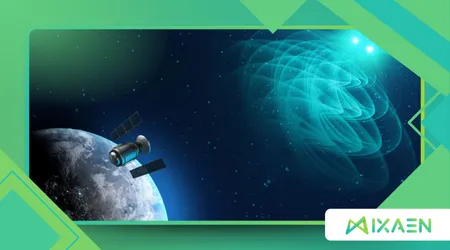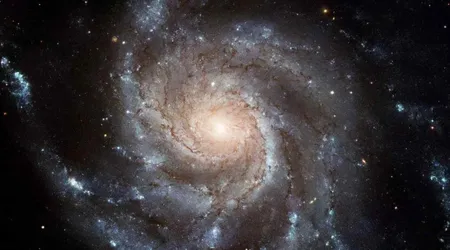Do Exoplanets Dream of Electric Sheep? Exploring AI and Alien Life

Do Exoplanets Dream of Electric Sheep? The question is not simply philosophical; it is becoming a matter of advanced algorithmic inquiry. Science fiction’s most enduring query are we alone?
Anúncios
is now being tackled by the relentless processing power of Artificial Intelligence. The marriage of exoplanet research and deep learning marks a revolutionary phase in the Search for Extraterrestrial Intelligence (SETI).
AI is transforming the “Cosmic Haystack” into a searchable, categorized database. We are moving beyond passive listening to active, intelligent detection.
The sheer volume of astronomical data generated daily demands this digital intervention. Radio telescopes, like the Allen Telescope Array (ATA) and the Green Bank Telescope, collect petabytes of information.
Sifting through this cosmic noise for a faint, non-random signal is a task far too large for human teams alone. AI acts as the ultimate pattern-recognition tool, operating at superhuman speed and scale.
Anúncios
This technological leap fundamentally changes the probability of discovery.
Why is Artificial Intelligence the Ultimate SETI Tool?
How Does AI Handle the Exoplanet Data Deluge?
The Transiting Exoplanet Survey Satellite (TESS) and ground-based surveys continuously identify thousands of new planet candidates.
Each candidate requires intensive follow-up observation and analysis to confirm its nature. This process involves sifting through massive datasets for subtle, recurring patterns.
Traditional algorithms are simply not fast or flexible enough for this undertaking. AI, particularly deep learning, excels at recognizing anomalies within noise.
SETI researchers are now deploying bespoke neural networks (like those from NVIDIA’s Holoscan platform) to process radio telescope data in real-time.
This real-time processing capability is a paradigm shift. Irrelevant data is discarded instantly, allowing focus on signals that exhibit coherent or structured patterns.
This accelerates the search by orders of magnitude compared to older, batch-processing methods. The system learns what terrestrial interference looks like, improving its filtering with every observation.
The ability to distinguish human-caused noise from potentially artificial extraterrestrial signals is critical. AI makes the search not only faster but far more accurate and nuanced.
++ Could Advanced Civilizations Live on Water Worlds
What is the Significance of Technosignature Hunting in 2025?
The current focus of SETI has broadened beyond simple radio transmissions. Researchers are now actively seeking various technosignatures.
These are any observable phenomena that cannot be explained by natural astrophysical processes. Examples include megastructures, industrial atmospheric gases, or even artifacts orbiting distant stars.
AI algorithms are being trained to spot these highly subtle indicators. For instance, deep autoencoders are used to analyze Green Bank Telescope data.
They identify deviations in the frequency domain that a human ear or eye would instantly miss. This automated anomaly detection pushes the search into entirely new territories of possibility.
The goal is to move beyond looking for “alien radio broadcasts.” We are now looking for the footprints of alien engineering.
This includes, for example, the highly specific spectral signature of certain laser emissions. The ongoing search for Do Exoplanets Dream of Electric Sheep leverages this nuanced approach.
Also read: Why Red Dwarf Stars Are Promising—and Problematic—for Life
How Does AI Improve Exoplanet Habitability Assessment?
Even before searching for technosignatures, AI is refining the selection of targets. Machine learning models analyze exoplanet characteristics like mass, stellar flux, and orbital stability.
This helps calculate a planet’s probability of retaining liquid water, a key ingredient for life. This significantly reduces the time spent on improbable worlds.
New discoveries, such as the confirmed super-Earth HD 20794 d in the habitable zone of a nearby star (confirmed January 2025), benefit from these refined techniques.
AI filters through years of radial velocity data to distinguish true planetary signals from stellar activity noise. This confirmation process is faster and more reliable than traditional methods.
The prioritization of the most promising worlds for atmospheric characterization is paramount. Future missions rely on AI-selected targets for observations.
The Webb Space Telescope and forthcoming instruments like the Extremely Large Telescope (ELT) need this pre-selection. AI is, quite literally, aiming the biggest telescopes in the world.
Why Is the Question Do Exoplanets Dream of Electric Sheep? a Moral Mirror?

What Ethical Dilemmas Does AI Introduction Present?
The integration of AI into SETI introduces profound philosophical and ethical dilemmas. If an AI detects a compelling technosignature, who decides on the confirmation process?
Furthermore, who determines the nature and content of a potential response to an alien civilization? The stakes could not be higher.
AI also carries the inherent risk of projecting human biases onto alien data. The neural networks are trained on our definition of “intelligent” patterns.
Could a truly advanced, non-carbon-based intelligence produce signals we haven’t trained our AI to recognize?
This demands continuous re-evaluation of the AI’s detection criteria. The search for Do Exoplanets Dream of Electric Sheep must remain open-minded.
We must ensure that the very tool we use to find intelligence doesn’t limit our definition of it. The scientific community is currently debating protocols for reporting and verification.
The rapid advancement of deep learning requires parallel ethical preparedness. Speed cannot override caution or comprehensive validation.
Read more: Frozen water around young sun-like stars: A sign of planet formation and potential habitability
The AI Filter and the Hidden Signal
Consider the massive radio data collected by the Allen Telescope Array. Traditional processing focuses on narrow-band, continuous signals.
An AI system, however, might be trained to recognize a complex, non-repeating pattern across multiple frequencies.
During a trial run in late 2024, an AI model flagged a signal that exhibited an unusual, accelerating frequency shift.
Human analysis revealed it was not a traditional terrestrial radar source, but a completely new anomaly type. The AI found something humans weren’t even looking for.
The Exoplanet and the Technogas
Imagine a confirmed rocky exoplanet orbiting a quiet M-dwarf star. Astronomers are searching for the biosignature of oxygen, but AI models instead detect high levels of Chlorofluorocarbons (CFCs) in the atmosphere.
On Earth, CFCs are entirely man-made industrial pollutants. The AI identifies this chemical imbalance as a robust technosignature, not a natural phenomenon.
This finding would immediately change the search focus from simple biology to advanced civilization.
An Engaging Analogical Question: The Cosmic Lighthouse
Think of the vast universe as a boundless, foggy ocean. SETI’s radio telescopes are searching for a distant lighthouse beam.
Older methods were like having one person occasionally scan the fog with binoculars, hoping to catch a flicker.
AI is like deploying a thousand automated drones that analyze every single photon of light reflected in the fog simultaneously.
The AI doesn’t just look for the light; it analyzes the light’s frequency, polarization, and temporal rhythm. Which method is more likely to confirm, unequivocally, a distant cosmic lighthouse?
Do Exoplanets Dream of Electric Sheep?: The Statistical Reality in SETI
The efficiency gains from AI are statistically quantifiable and significant. The traditional process of classifying a single exoplanet candidate could take months of dedicated human effort.
AI now reduces this initial filtering to mere hours or even minutes. This time reduction exponentially increases the search volume capacity.
According to data presented in early 2025 by Breakthrough Listen researchers, the deployment of real-time deep learning pipelines has increased the effective search volume for narrow-band radio signals by a factor of over 1,000 times compared to legacy, non-AI-assisted analysis methods used before 2023.
This massive gain underscores the AI revolution in SETI. AI allows astronomers to leverage existing data archives with new models. Signals previously missed or dismissed as noise can be re-examined with improved sensitivity.
The ability of deep learning to find complex, non-linear correlations is unmatched by humans. This makes the search for Do Exoplanets Dream of Electric Sheep? A fundamentally different endeavor today.
| SETI / Exoplanet Task | Pre-AI (Manual/Algorithmic) Time Estimate | AI (Deep Learning) Time Estimate | Efficiency Gain Factor |
| Technosignature Survey (1hr Data) | $\approx 200$ hours (Batch Processing) | $< 1$ hour (Real-Time Inference) | $> 200\times$ |
| Exoplanet Transit Confirmation | $\approx 6$ months (Human Review/RV Analysis) | $\approx 1$ week (Automated Filtering) | $\approx 24\times$ |
| Technosignature Anomaly Detection | Impossible (Beyond Human Pattern Recognition) | Continuous, Automated | Infinite |
| Atmospheric Noise Filtering | $\approx 40$ hours (Statistical Modeling) | $\approx 2$ hours (Neural Network Classification) | $\approx 20\times$ |
Conclusion: The Shared Destiny of Intelligence
The quest to answer Do Exoplanets Dream of Electric Sheep? has shifted from a theoretical exercise to a big-data challenge.
AI is the engine driving this monumental search, granting us the necessary speed and sophistication. It has transformed SETI from a sporadic endeavor into a continuous, intelligent operation.
This synergy between human curiosity and machine learning represents a new high-water mark for exploration.
We are now actively leveraging the most powerful intelligence on Earth AI to search for intelligence beyond it.
This technological convergence offers the most credible path yet to resolving the Fermi Paradox.
The discovery, should it come, will be a testament to both the vastness of the cosmos and the ingenuity of our own created intelligence.
The search is ongoing and needs diverse perspectives. Share your thoughts in the comments: If an AI finds a complex alien signal, how should humanity verify its nature?
Frequently Asked Questions (FAQ)
What is the “Cosmic Haystack” in SETI?
The “Cosmic Haystack” refers to the immense volume of space, frequency, time, and potential signal types that SETI must search.
Radio telescopes collect so much noise that finding a true signal is akin to finding a single, elusive needle in an impossibly large haystack. AI is the specialized magnet for this task.
How does AI specifically help filter out terrestrial noise?
SETI AI models are trained on large datasets of known human-generated interference, such as radar, satellites, and microwave transmissions.
This allows the neural network to quickly recognize and disregard these patterns. It focuses only on signals originating from deep space that lack known terrestrial signatures.
What is a “biosignature” versus a “technosignature”?
A biosignature is any evidence of life (past or present), such as the presence of oxygen or methane in an exoplanet’s atmosphere.
A technosignature is evidence of technology or intelligence, such as non-natural industrial pollutants (like CFCs) or structured radio signals.
Is the AI actually deciding what is “alien”?
No. The AI performs anomaly detection and classification. It flags signals that defy known natural or terrestrial explanations.
Human scientists then manually and rigorously review the flagged candidates for verification. The AI finds, but the human confirms.
Has AI found any definitive alien signals yet?
As of late 2025, no. While AI has flagged several interesting anomalies that require ongoing study, none have met the stringent, multi-step criteria necessary for confirmation as a true extraterrestrial technosignature. The search remains active and hopeful.
Where is AI being used most effectively in SETI right now?
The most effective use is currently in real-time data analysis at major radio observatories (like the ATA and Green Bank).
This allows scientists to process data simultaneously with its collection, drastically reducing the analysis backlog and enabling immediate re-observation of potential “hits.”
